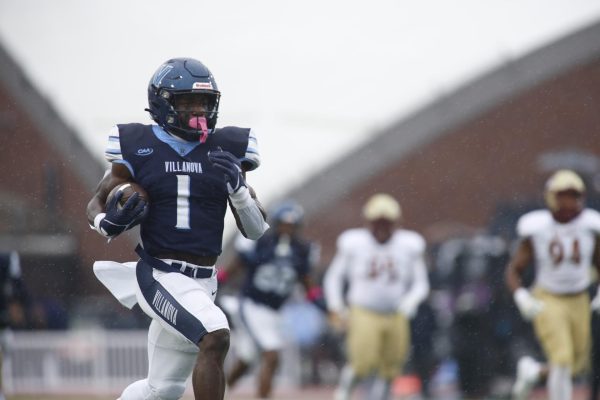ABELLO: Shedding light on love

February 13, 2008
Love matters, and not just because there is a heart on our University logo or a Latin word for love in our University motto. Love is more than an ideal to which we aspire; love is a process by which we learn – about each other but mostly about ourselves.
We learn the never-ending lesson that each of us is capable of loving, and more importantly that we are capable of being loved.
It has been my personal experience that our deepest fear is not of death, our deepest fear is dying with no one around us to love.
We sing about love, we write poetry and watch movies about love. We write papers about love. We take entire classes about love. We attend lectures about love.
The film “Love Actually” was viewed no less than once per week in each freshman residence hall during the 2004-2005 academic year. Ask any senior. It’s true.
Love just never gets old.
That is because, unlike other goods, love does not lose value in great quantity, violating the economic pillar of diminishing marginal utility.
In other words, the more apples you have, the less each additional apple means to you, but the 100th hug probably feels as good as the first. Have you ever been sick and tired of loving or being loved? Forget about oil. We’re addicted to love.
Such a miracle good should make for good business, if one can capitalize on the expression of love.
And what a business it is, especially during the annual wave of love-related activity that appears every Valentine’s Day. The American Greeting Card Association estimates that one in four greeting cards purchased annually is for Valentine’s Day – roughly 190 million cards.
That number excludes countless home- or classroom-made cards exchanged among neighbors or classmates. AGCA also estimates about a billion Valentine’s cards are exchanged annually worldwide. Only Christmas tops that.
By the numbers, love appears to matter more to some versus others. Specifically, AGCA notes that women purchase 85 percent of all Valentine’s cards.
Cards, of course, are only the beginning. According to the U.S. Census Bureau, 39,718 Americans work in the chocolate-processing industry, 21,389 Americans employed by the non-chocolate confectionary production industry and 101,861 Americans who own or work in flower shops, and it hardly ends there.
The Diamond Information Center estimates that 10 percent of all engagements per year happen on Valentine’s Day – about 230,000 engagements. Last February alone, according to the Census Bureau, America’s 29,624 jewelry stores sold $2.5 billion worth of jewelry that likely came from one of the nation’s 1,798 jewelry-manufacturing locations.
Of course, the business of love is not limited to Valentine’s Day. This year, think about more than chocolate and diamonds; think about where they came from.
Although not every piece of jewelry has a diamond, about half of all diamonds – a $9 billion global market – come from Central and Southern Africa.
Seventy percent of raw cocoa comes from Western Africa, according to the World Cocoa Foundation; and globally, five to six million cocoa farms support 40 to 50 million people – most of them in or near poverty and nearly all of them in developing economies.
Needless to say, many of those economies are not feeling the love so much right now. Underlying civil unrest in Kenya, civil war in Somalia and genocide in Sudan are economic foundations under attack because of climate change.
Your love might lead you to purchase more than chocolate or diamonds to help those economies. It might just illuminate new ways of loving you had not thought of before.
A single fluorescent light bulb costs more than an incandescent, but it lasts 10 times longer and uses 65 to 75 percent less energy – good news, especially if you pay your own electric bill. It will also save 500 pounds of carbon emissions per year. Purchasing fluorescent bulbs helps the poor as well as helping yourself.
That’s the other thing about love. It feels good to give, as well as receive.
——————–
Oscar Abello is a senior economics major from Philadelphia, Pa. He can be reached at [email protected].










